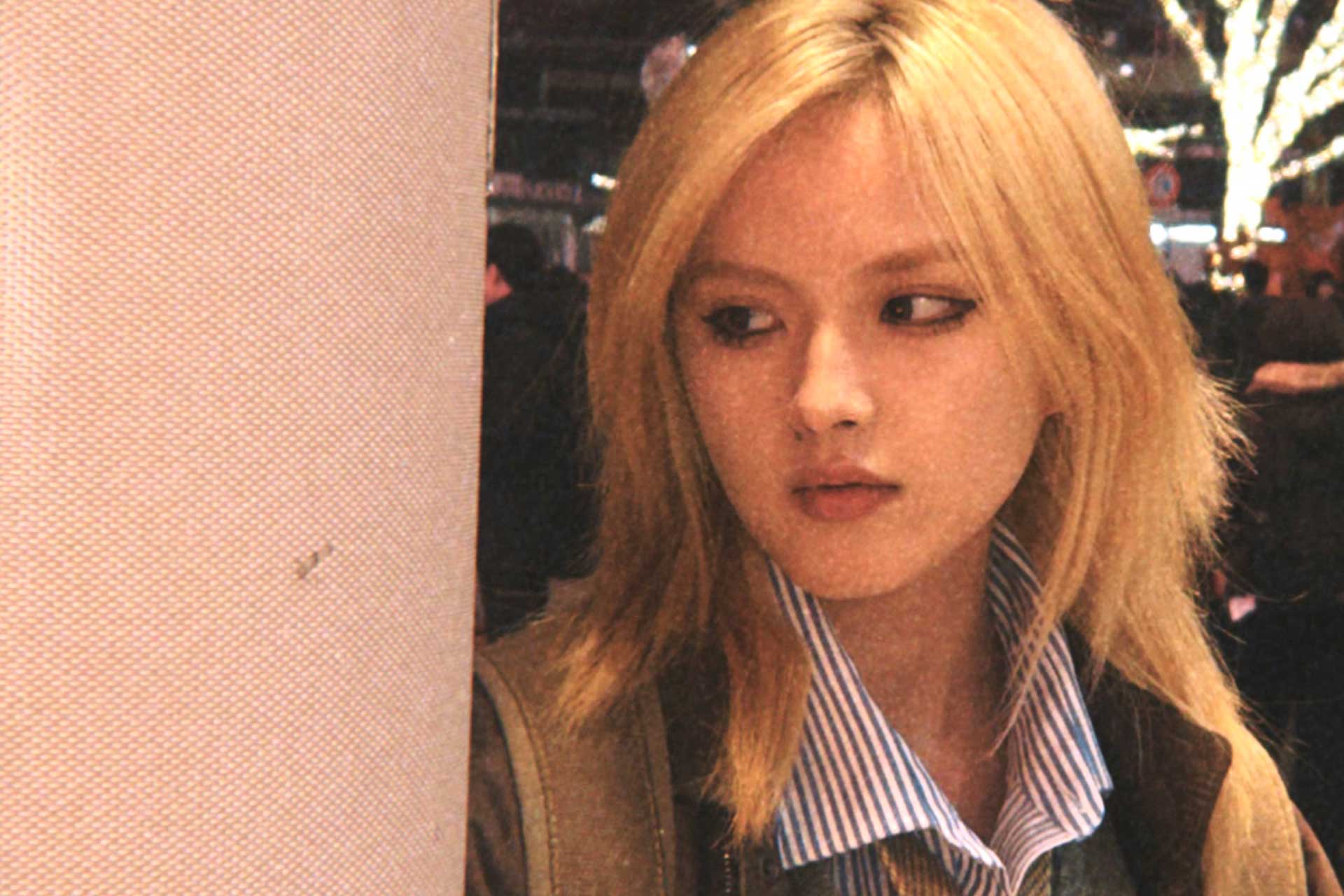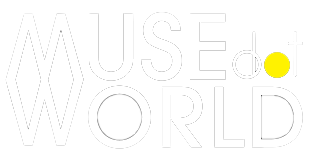NEO·GENESIS by Jie Chen: Fashion as a Canvas for Storytelling

Fusing Sustainability with Modern Design, Zhen Hua Transforms Urban Spaces
April 15, 2025
Bryan Engram and Brazen Animation’s Role in Magic: The Gathering | Bloomburrow
April 16, 2025
Jie Chen | MUSE Design Awards
Jie Chen
Jie Chen is a fashion designer and visual artist who draws from illustration, graphic design, 3D pop-up books, and digital fashion to transform her original stories and imagined worlds into striking, functional designs that reflect her deep-rooted passion for storytelling.
My name is Jie Chen, and I am a fashion designer and visual artist based in China. I graduated from Parsons School of Design with a degree in Fashion Design and have expanded my practice into various artistic fields, including illustration, graphic design, 3D pop-up book design, and digital fashion.
These interdisciplinary explorations allow me to enhance my fashion design proposals and experiment with innovative combinations of artistic forms.
My passion for design stems from my deep love for storytelling. I believe design is a powerful medium for conveying narratives both visually and functionally, resonating with audiences on a meaningful level. Through my work, I transform original stories, thoughts, and fantasies into tangible, visually compelling creations that not only solidify my artistic vision but also serve a functional purpose.
Being recognized by the MUSE Design Awards is truly a dream come true. For a long time, I created in solitude, viewing my designs as a personal gateway for self-expression. I never fully considered how my visual voice might resonate with the world.
Receiving this recognition has not only strengthened my determination to share my work with a wider audience but has also given me the confidence to believe that my designs can be appreciated by many—beyond just fellow artists.
This achievement has undoubtedly strengthened my background and résumé, providing me with newfound confidence to continue creating. It has reinforced my dedication to design and art, inspiring me to create with even greater passion and intention.
While my love for artistic expression has always been unwavering, this recognition has only fueled my commitment to evolving and pushing the boundaries of my work.
I think I have a lot to share on this topic. Unlike a typical designer who focuses solely on one discipline, I prioritize the breadth of my artistic exploration, constantly experimenting at the intersection of multiple art forms. For my award-winning project, 'NEO⋅GENESIS,' the creative process extended far beyond traditional garment construction.
Before the designs took physical form, they were first prototyped as 3D pop-up books, with each structural element in the garments derived from pop-up book mechanics. These prototypes, in turn, were inspired by my original genesis story, which began as a series of illustrations.
This approach makes my creative process unique—rather than relying on conventional mood boards, I generate my own primary visual references, ensuring that every project remains deeply personal, interdisciplinary, and experimental. By merging various disciplines, I continuously push the boundaries of my work, allowing each project to introduce new techniques and artistic perspectives.
This not only strengthens my technical skills but also expands my artistic vision, reinforcing my commitment to innovative storytelling through design.
One of the most unusual sources of inspiration I've drawn from is hologram technology. I'm fascinated by how holograms capture light and create images that seem to float in space. In one of my projects, I created holographic images and seamlessly integrated them into an accessory design.
Using a glass plate to capture and project the visual essence of my set, I transformed the accessory into a dynamic visual narrative that merges holographic photography with wearable art. This innovative approach pushed me to explore the intersection of technology and design, challenging traditional perceptions while inviting viewers into a futuristic, interactive experience.
It also reinforced my commitment to experimenting with new fields and blending diverse art forms across disciplines.
I want people to respect the sustainable aspects of design and recognize the physical waste generated throughout the creative process. It’s important to be intentional about minimizing waste and making clear plans to reduce material consumption from the start.
As a fashion designer, I am deeply concerned about the environmental impact of my creations—particularly the amount of material used to bring a vision to life. Fashion production can be resource-intensive, and at times, the level of consumption required to meet certain expectations can be excessive. That’s why I strive to find optimistic solutions that achieve my design goals while using the least amount of materials possible.
One approach is upcycling discarded materials, giving them new life through innovative design. Additionally, I prioritize efficient pattern-making techniques, strategically arranging pattern pieces to maximize fabric usage and minimize scraps during the cutting process.
I also want people to become more conscious of just how much material goes into making a single garment—and how much waste is generated along the way. The fashion industry is incredibly resource-intensive, and as consumers, we must carry a sustainable mindset when engaging with fashion, whether as creators or consumers.
I strive to find a middle ground between my creative vision and client expectations. I believe that staying true to my artistic ideas can lead to unexpected moments of resonance, sparking interest and even persuading others to believe in my vision. However, I also recognize that some design concepts can be niche and may not always align with broader market demands.
In such cases, I am open to adapting certain details to make a design more practical, commercial, and widely accepted. This doesn’t mean compromising my artistic integrity—it’s about understanding that, in a client-based project, the client’s vision is the priority, and my role is to bring their ideas to life. Maintaining a healthy balance between artistic expression and functionality is crucial.
That said, if a particular idea feels too experimental for a commercial project, I don’t see it as a loss. Instead, I set it aside for my personal creative work, where I have the freedom to fully explore my artistic direction without constraints. This way, I ensure that both innovation and practicality coexist in my design practice.
There were significant technical challenges while working on my award-winning design. As mentioned earlier, the structural elements were inspired by pop-up book mechanisms and initially prototyped using paper and cardstock. However, when translating these concepts into fabric, I discovered that the physical properties changed drastically, and some transformative pop-up mechanisms were difficult to achieve.
To overcome these obstacles, I conducted extensive trials with various fabrics, interfacings, backings, fusibles, and hardware. I experimented with key decisions—such as whether each pattern piece should be single-sided or double-sided, interfaced or not, or stiffened, as well as adjustments to the structure's size. By rigorously testing the weight and flexibility of these materials, I aimed to mirror the mechanical effects of my paper prototype and create a truly transformative garment.
This process significantly challenged my problem-solving and technical skills, but the outcome was highly successful, and I am very satisfied with the creative and technical growth I experienced throughout this journey.
To avoid creative blocks, I collect inspiration daily. Whenever I come across an illustration with excellent composition, a striking color palette, or a graphic design that delivers detailed visuals while emphasizing its main message, I save it on my phone for easy reference.
I also curate my personal creative space by printing and pinning artworks on my walls, updating them regularly to keep my aesthetic fresh. I believe that an intimate, inspirational environment can both reflect and influence one’s mindset—especially since I spend much of my time in this space, where the visuals constantly inspire me.
Additionally, I enjoy reading novels and watching anime with compelling plots, settings, and visual designs. These experiences not only enhance my storytelling abilities but also enrich my creative reservoir, serving as a continuous source of inspiration whenever I need it.
I love telling stories through my designs because I believe that great art and design carry meaningful messages. To me, a skilled designer is also a storyteller—the work itself narrates its story visually and physically once it’s put into use. However, my intention is not to persuade or manipulate the audience’s perception.
Instead, I welcome their personal interpretations and the unique connections they form with my work. Their feedback not only enriches my creative journey but also challenges me to shift my perspective, leading to new experiences and deeper insights into the diverse, emotional responses my designs evoke.
Moreover, the stories I infuse into my designs represent a state of mind—a free expression of creativity that celebrates the will to create, rather than requiring others to decipher my inner thoughts.
I believe aspiring designers should prioritize developing their technical skills. While this may sound like conventional advice, the truth is that great art and design can't be realized through ideas alone. Without the necessary technical knowledge, even the most innovative concepts remain abstract and unfulfilled.
Continually refining our skills keeps both body and mind active, ensuring that when inspiration strikes, we're ready to bring our visions to life with precision. A solid technical foundation empowers us to turn ideas into reality and avoids the frustration of being unable to execute our creative goals.
I would be honored to collaborate with Hussein Chalayan if given the chance. His early runway shows were cinematic, narrative-driven, and experimental—constantly pushing the boundaries of fashion. I vividly recall his AW99 show, where an airplane dress featured a mechanical panel that moved automatically as the model performed on stage.
Even in the 20th century, Chalayan masterfully integrated high technology into fashion in both imaginative and achievable ways. The ingenuity of his designs continues to inspire me to explore the intersection of technology and creativity in my own work. Collaborating with such a visionary would be an invaluable opportunity to learn from his bold experimentation and innovative approach.
I wish people would ask me, "What story do you hope your work tells?"
My answer would be that every piece I create is a narrative waiting to be discovered. My process blends intuition with rigorous experimentation—each element, whether it's a pop-up structure or a series of illustrations, is meticulously chosen to contribute to a larger story.
I see my work as an invitation for dialogue, not only through its visual impact but also by encouraging personal connections and emotional responses. I hope that viewers will infuse their own experiences into the story I set in motion, making art a shared journey of continuous discovery.
NEO·GENESIS | 2025



Jie Chen
Jie Chen is a fashion designer and visual artist who draws from illustration, graphic design, 3D pop-up books, and digital fashion to transform her original stories and imagined worlds into striking, functional designs that reflect her deep-rooted passion for storytelling.
Explore the journey of Zhen Hua, the Silver Winner of the 2025 MUSE Design Awards. She is an architectural designer with five years of experience, known for blending creativity, sustainability, and innovation while exploring new technologies that reimagine spaces and tackle real-world challenges.
